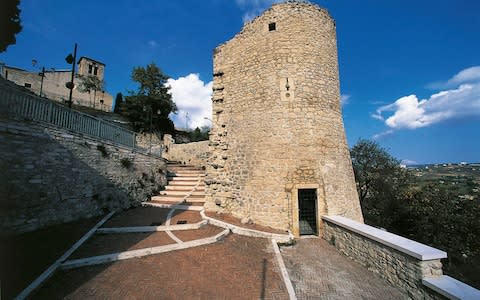Italian region offers €8,000 a year to newcomers prepared to move to dying villages

One of Italy’s smallest and least famous regions is offering newcomers a bounty of €8,000 a year to settle in villages that are in danger of dying out.
The offer has been made by Molise, which is squeezed between the mountainous Abruzzo region and Puglia – the heel of the Italian boot.
It is so little known that there is a joke among Italians that “Molise non esiste” – Molise does not exist.
It used to be joined with Abruzzo but was carved off as an independent entity in 1963.
The region wants to reverse the effects of decades of depopulation, which has left many villages bereft of inhabitants.
There are conditions attached – the offer applies to settlements with a population of less than 2,000, and newcomers must set up and run a new business for at least five years.

There is no shortage of places to choose from – of the region’s 136 villages, more than 100 now have populations of less than 2,000.
The initiative will be funded with €1 million from Italy’s ministry of economic development.
Approved by the regional government, details will be published in an official gazette on September 16.
Prospective candidates will then have 60 days in which to apply.
The initiative was dreamt up by Antonio Tedeschi, a member of the centre-Right regional government.
“Our villages offer an excellent quality of life from an environmental and social point of view,” said Mr Tedeschi. “You can live well here for a lot less than you would have to spend in the city.”
He wants to help villages like Pizzone, which is now down to just 300 inhabitants. All the shops have closed, leaving just a bar where locals can buy bread and milk along with their morning espresso or cappuccino.
“Everyone is leaving. There is no future. The only businesses that are left are small agricultural enterprises that people inherited from their great-grandparents,” Anna Laura D’Amico, whose family are from the village, told Corriere della Sera newspaper.
“We really hope the project will work. This region deserves a lot better.”
Molise is Italy’s second smallest region after Valle d’Aosta in the northwest, an Alpine pocket on the border with France.
Around 40 per cent of Molise is mountainous, offering great hiking opportunities, and there are Roman ruins as well as villages that were settled by refugees from Albania in the 14th century.

Large parts of Italy struggle with the effects of depopulation, and villages have come up with a number of initiatives to try to address the problem.
Some offer abandoned houses for a nominal price of one euro, on condition that buyers restore them to their former splendour, while others have invited migrants and refugees to settle to counter the effects of an ageing population.
Across the country, the number of babies being born is at its lowest ebb since the unification of Italy in 1861.
Emigration has also had a dramatic effect – there are an estimated 600,000 Italians living in the UK alone.

